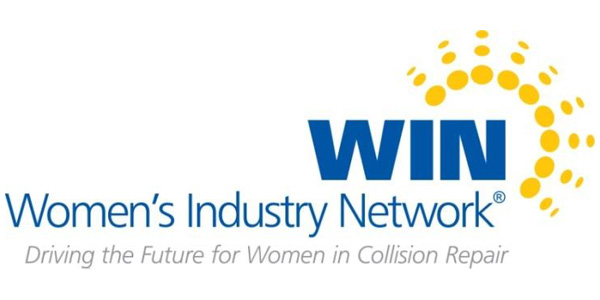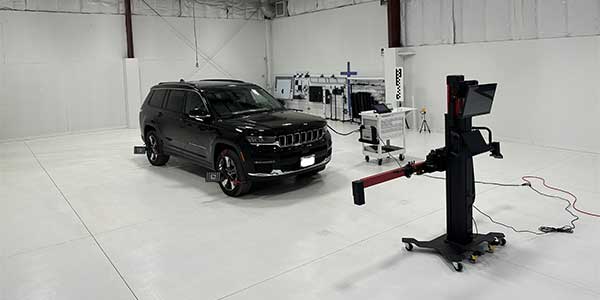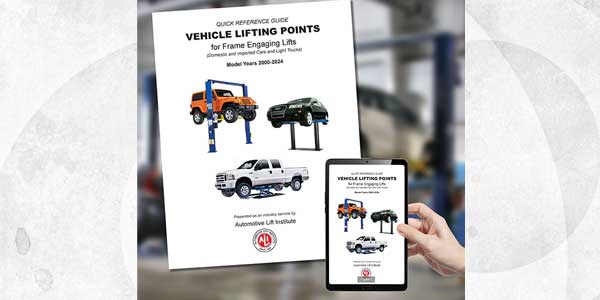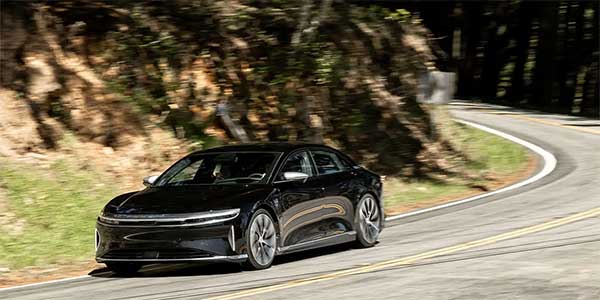I recently read a news story on your Web site [CAA Survey Questions Quality of CAPA-Certified Parts] and feel the need to comment.
First, a little background on me. I’ve owned and operated a larger shop on the West Coast for almost 30 years and have experienced firsthand all of the different changes that have affected our industry.
We’ve participated and are currently participating in numerous DRP partnerships, as well as doing business with numerous insurance companies with which we don’t have that association. So we’ve been on both sides of it.
I also have a fair amount of exposure on the insurance side, as my father was the president of a West Coast insurance company and I own a life and annuity brokerage.
The point is that I’m sympathetic to both sides of many issues that insurance and shops must address in the day-to-day efforts to insure and repair vehicles….and still show a profit after all is said and done.
With regard to the aftermarket parts issue, suffice it to say that the motivation for the insurance companies is apparent, but it needs to be said that not all of their motivation is as devious as many shops would argue. Insurers don’t promote aftermarket parts solely because they’re easier on their bottom lines. A significant benefit to both the shop and the insurance company is the introduction of a “competitor” to the OE parts vendors. A benefit to the insurer is that OE parts prices are kept in check and they thus save money when they purchase OE parts. For the shop, it’s no secret that the percentage of cars declared total losses would skyrocket if there was no limit to what the OE price could increase to. From that aspect, both insurers and shops benefit.
The real problem, and the crux of the article, is that even though the “stated motivation” for the use of aftermarket parts is to keep the OE vendor pricing in check, there doesn’t seem to be the same concern on insurers’ part to ensure that the parts are in fact “like kind and quality.” (Insurers use terms like that because they can’t use terms such as “OE standards” – that probably scares the heck out of their legal departments. Besides, promoting that standard would mean that they would then have a specific stated standard that they must meet.)
Though we’ve tried to maintain a “can do” attitude regarding the use of aftermarket parts, it has grown increasingly more difficult to justify the constant compromise of quality that using aftermarket parts requires on a daily basis.
Having both experience and relationships on both the shop side as well as the insurance side creates a bit of a conflict in me because I understand the benefit of what the insurance companies are trying to accomplish yet I experience on a daily basis the end result of the product for both the shop and the vehicle owner.
For years, the aftermarket industry as well as CAPA have misinformed and convinced the insurance companies into thinking that their CAPA certification means that the parts look and perform within the same standards as OEM parts. Let’s hand it to them, they did a stellar job of gaining the confidence and buy-in from insurers (although it wasn’t a difficult task because they were telling insurers about something they would benefit from financially).
When I attended NACE a few years back, I was impressed by the jig system they demonstrated and the minimal tolerance levels each part had to have to meet CAPA standards. At least, that’s what they were promoting. My production manager, who was with me, asked the million-dollar question: “With the tolerance margins being so tight, and the jig such a rigid template to measure against, how is it possible that we continue to receive, on a consistent basis, a significant percentage of CAPA- certified parts that don’t fit the vehicle?” (It needs to be noted that in those cases when an aftermarket part won’t fit a vehicle and then an OEM part is installed, it always fits within the OEM’s factory tolerance margins).
Though CAPA and the aftermarket industry has touted a product with only a 4 percent failure (poor fit) rate, the fact is that the percentage of CAPA parts that won’t fit the vehicle within OE factory standards are easily 10 times that. We’ve experienced poor fit failure levels in excess of 60 percent. When we complain to the vendor about the issue, we’re always told that "we’re the only one." Heard that before? Though I understand aftermarket parts suppliers’ motivation (they need to sell their product), when you hear that phrase from the insurance companies, it’s a little more alarming. Gee, maybe I’m accusing them of the wrong thing. If I’m the only shop that has this problem, then maybe they’re saving all their substandard parts and only sending them to us. Wouldn’t that be discrimination?
When we hear that from insurance companies (especially ones with whom we have a partnership), we wonder what the other shops are in fact doing. The insurance representatives prefer to say, “I don’t know what [other shops] are doing. I don’t care how you do it, just get it done.”
When the other shops are quizzed, it turns out that even though the insurers are reporting that they’re using a significant percentage of alternative parts, the fact is that the actual percentage going on the vehicles is significantly less.
Rather than assume the cost to fit and re-replace and deal with the hassle of returning a failed aftermarket part and a customer complaint, most of the DRP shops do a combination of the following:
• Purchase and install OEM part and eat the difference
• Pressure the OEM vendor to match the aftermarket price, and then install OEM part at the aftermarket price
• Use some aftermarket parts that, even though they don’t meet the OEM fit standard, are deemed to be “tolerable” for the vehicle condition and/or customer “savvy” (they won’t notice the flaw).
So the next time you see or hear an insurance industry and/or aftermarket industry report or study that states that they’re succeeding in using a certain percentage of aftermarket parts, realize that it’s a flawed study.
Each time I brought the high percentage of parts failure to an insurer’s attention, I was confused by the response that I received. After all, it wasn’t the insurance company’s responsibility that the aftermarket parts didn’t fit. My thought was that as big a shop as we are, we would never be big enough to carry the clout or influence to pressure the aftermarket vendors and manufacturers to fix the root cause of the problem – but the insurance company certainly carried that kind of weight. Also, that if aftermarket vendors were promoting to insurers that their parts met a certain standard, and then insurers bought into that and promoted the vendors’ products, the insurers would want to know to what extent they were being misinformed and that they ought to be a little miffed with the aftermarket industry for not providing what it promoted….and then, of course, pressure vendors to fix it.
In a perfect world, I imagine that would be the case. But I imagine that they do know the reality of the situation…and that there’s a very specific reason why aftermarket parts continue to fall short of the OE standard that vendors consistently promote. And there’s a very good probability that the problem is so big that it’s similar to corruption in Congress – it’s too big and too widespread to control and fix.
It may not be that insurers are uninformed or don’t care. What might be closer to the truth is that they really can’t afford to understand or know the truth. They can’t afford to see the study or investigate it internally. I imagine that their legal departments have instructed them that their safest position is to only verify the credibility of an outside organization like CAPA and then believe their assurances and claims that all is well with CAPA parts. I think the legal term for that is “plausible denial”!
Think about what happened to the tobacco companies. The real thing that sunk them was that the prosecutor was able to show that they had “verified knowledge” that their product caused health problems and that, in spite of that knowledge, they continued to promote it as a safe substance. So what would happen if the insurance industry had that same knowledge and had the same studies? I think you can assume there would be some pretty large class action suits and settlements, at the very least.
Am I puzzled by the insurance representatives’ indifference to the fact that what they’re proposing (insisting) for us to use is substandard (significantly)? Not really. For this to be fixed, I think we can assume that the aftermarket vendors and manufacturers can’t just flip a switch to fix their quality and fit standards, so in the meantime, insurers would have to:
1. Admit that there’s a problem (risky liability for them).
2. Notify aftermarket vendors that they can’t and won’t authorize the purchase or use of aftermarket parts until their products meet the OE fit standard and not some bullcrap CAPA gobbledygook definition. (This would be very expensive for insurers in that it would result in hundreds of millions of dollars in increased claims costs. It also might be devastating for the aftermarket industry because the zero sales until the problem was fixed might be more than it could withstand. We would probably see some aftermarket businesses close for sure).
A more realistic plan would be for an independent (third party) company to approach the aftermarket industry separately and give it its own verified study and then it a reasonable period of time to correct the problem before it presented anything to the insurance company. That way, insurers are somewhat shielded from receiving information for which they cannot afford (legally or financially) to accept or have knowledge of. Plus, it potentially buys the aftermarket vendors the time that they would undoubtedly need to recommit and retool to be able to produce and provide products that meet OE standards.
Anyway, who’s going to do it? Or are we all going to continue to put those square pegs into round holes and just look the other way?
Name withheld for publication













